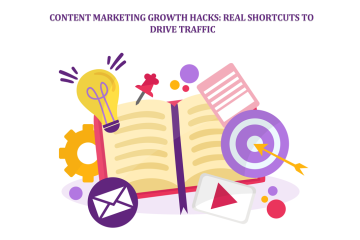
October 29, 2024
Omnisend reports that retailers using at least three channels offer a 494% higher order rate (0.83% vs 0.14%) than those launched on just one channel. Yet, this multichannel opportunity comes with challenges: many eCommerce store owners need help managing inventory effectively across platforms. That leads to oversold items and lost sales every month.
Quick Links
Does that sound familiar? You’re not alone: most retailers face obstacles in providing a seamless shopping experience across channels.
However, the emerging solution that is revolutionizing eCommerce businesses is the omnichannel POS system. Retailers report increased yearly revenues and improved customer satisfaction ratings after switching. Imagine being able to sync your inventory across all platforms in real time, track customer behavior perfectly, and never lose a sale due to stock mismanagement again.
Ready to stop losing money on the table? Let’s see together how an omnichannel POS system can convert your multi-channel headaches into a strategic advantage.
What is an Omnichannel POS System?
An omnichannel POS system is a comprehensive retail management solution that combines all sales channels-physical stores, eCommerce platforms (Magento, Shopify, Woocommerce), marketplaces (Amazon, eBay, Etsy), mobile applications, and social media into one integrated system.
While traditional POS systems focus merely on processing transactions within the store, an omnichannel POS creates a unified commerce environment with constant data interchange between channels. Therefore, these POS allow retailers to deliver consistent customer experiences no matter where or how their customers choose to shop.
8 Key Benefits of an Omnichannel POS System for eCommerce Stores
- Provide Personalized Experiences for All Customers
Data from your omnichannel POS in real time help you fashion shopping experiences that your customers will dwell on – visiting your website at midnight or experimenting with in-store products. It smoothly unifies all shopping channels, allowing customers to begin their journey online and complete it in the store or vice versa.
The figures are self-explanatory: shoppers who practice omnichannel consume 1.5X more than those who use a single channel. This is because they enjoy the best of both worlds: the convenience of shopping online 24/7 and the tangible experience of visiting brick-and-mortar stores, which operate harmoniously.
- Say Goodbye to “Sorry, Out of Stock”
An omnichannel POS system transforms your inventory management from a headache into a competitive advantage. Merchants can track every product movement in real time across all sales channels, from website orders to in-store purchases. Most importantly, the system automatically monitors stock levels, alerts you when it’s time to reorder, and keeps your supply chain running smoothly.
No more overselling or stockouts. No more manual counting or costly errors. Just accurate, up-to-date inventory data that helps you make smarter purchasing decisions and keep the right products in stock at the right time.
- Get to Know Your Customers Better
Your eCommerce site is full of information about your customers waiting to be uncovered. Every click, purchase, and browsing session becomes valuable data with the right Omnichannel POS system. Retailers can discover what products customers love when they shop and how they move through a store — all in real time.
Such precious data fuel personalized product recommendations and more effective marketing campaigns that resonate with the target audience. Connecting the POS system to the eCommerce platform allows a business to collect data and develop better customer relationships that will lead to repeat business.
- Keep Your Product and Pricing Straight Everywhere
Think of your POS system as the central hub for all your product data. When one update is made in your system, it reflects instantly across all sales channels — website, mobile app, and brick-and-mortar stores.
Need to change a price or tweak a product description? A few clicks, and it’s done everywhere. Thus, there is no need for tedious updates at each store location or concern over pricing errors that could result in lost sales or customer confidence.
- Watch Your Costs Shrink
An omnichannel POS system is a cost-saving device that reduces several expenses in a company. First, it significantly decreases labor costs by automating time-consuming tasks, such as counting inventory and generating end-of-day reports. Moreover, intelligent algorithms will learn your business patterns, which would help you schedule staff better and reduce overtime.
Also, retailers will never have to deal with expensive inventory blunders. You can order precisely what you need and when you need it. Accurate tracking is needed while managing various payment methods under one platform instead of having separate and expensive systems.
- Increase Sales and Customer Loyalty for All Channels
An omnichannel POS system allows your shop to be open for sale wherever your customers are on your website, mobile app, Instagram, and top marketplaces. More importantly, customers can begin shopping on phones, continue on laptops, and seamlessly complete in-store purchases.
Such flexibility makes shopping easier and puts your brand in front of more people. More visibility across different channels means more chances to convert your online visitors into customers.
In addition, this POS provides a loyalty program app wherever customers shop. Whether they earn points online, in-store, or through your app doesn’t matter. Their rewards are with them. This seamless experience transforms occasional buyers into loyal customers who keep returning because shopping is consistently rewarding, no matter how they shop.
- Accept Payments Like a Pro
An omnichannel POS system allows customers to pay how they want – whether by card, digital wallet, or their preferred payment app. It not only makes shopping convenient but also encourages more significant purchases.
With swift, digital transactions and automated payment processing, checkouts will be quicker, while getting and tracking payments will be simple.
- Keep Everyone’s Money Safe and Sound
Modern POS systems make the payment process easy and quick, from initiation to completion. Instead of manually calculating prices, discounts, and item details, the system handles everything automatically. Scan the items, and your Omnichannel POS will instantly generate accurate invoices with all the information needed.
Again, with secure NFC payment systems, you can process payments in stores, restaurants, or other establishments much faster and more conveniently for customers. You can send a digital receipt or print it instantly – depending on what your customer prefers.
How to Choose the Right Omnichannel POS System for Your eCommerce Store
1 – Identify Essential Functionalities
Before choosing an omnichannel POS system, determine the truly needed features for your business. This should be a process that begins with the examination of your business strategy and a mapping out of what essential versus optional functionalities are. Some of the critical questions to consider are:
- Which sales channels will you operate across?
- What depth of inventory management do you require?
- How will you handle customer data and profiles?
- Which payment methods must you support?
- Do you need integrated loyalty program capabilities?
2 – Establish Your Budget and ROI Requirements
So, while cost is essential, merchants should focus more on the overall value and return on investment. Keep in mind these are the key factors when evaluating ROI:
- Operational Efficiency: Will this system facilitate quicker transactions and streamline inventory management?
- Reduction of Errors: How effectively does it minimize clerical errors and the workload on staff?
- Revenue Impact: Can it help drive sales growth and profitability?
- Customer Engagement: Does it offer any solution or tool to help create a stronger customer relationship?
- Scalability: Will the system grow alongside your business?
Note that the selection based on upfront cost is myopic. Although a better system may have a higher upfront cost, it will be more economical in the long run. Think of all the hidden costs involved in using an inferior system – then you will likely spend more time and money later on changes such as migrating systems and retraining employees.
3 – Compare Available Omnichannel POS Options
Three main types of standalone omnichannel POS systems dominate the marketplace: on-premise, cloud-based, and hybrid. Each comes with unique benefits to various business requirements.
- On-premises POS systems store information on the company’s servers, so the business has complete control over its data and systems. That control comes with a lot of responsibility and cost, though. The business will internally handle all maintenance, hire IT professionals to install and maintain the system, and invest significantly in the initial setup.
Complete control over data is a great advantage, but these high upfront costs plus ongoing maintenance make this option difficult for most businesses.
- In contrast, cloud-based POS systems offer flexibility and scalability. They typically require lower initial investments and provide automatic updates, reducing maintenance costs. However, businesses may have less control over their data than on-premises systems.
- A hybrid POS system combines the strengths of both approaches. For example, a Magento omnichannel POS allows businesses to choose between on-premises or cloud hosting based on their needs.
This feature makes it exceptional since all the information is kept straight in Magento’s central database. As a result, their POS can provide unmatched flexibility in the deployment.
Depending on your Magento setup, you can choose on-premises or cloud hosting. When hosted in the cloud, the system delivers key benefits like automatic updates, easy scalability, and reduced maintenance costs. Yet it maintains the crucial advantage of centralizing all sales and customer data within your Magento system.
What makes this hybrid approach so attractive is the ability to combine the best features of both alternatives.
- When it is cloud-hosted, users benefit from lower infrastructure costs and automatic updates.
- On the other hand, users have better control over their data and systems when on-premises.
Moreover, there is a lifetime ownership model, and once purchased, there are no recurring subscription fees to worry about.
Conclusion
An omnichannel POS system is not a luxury but a necessity for any eCommerce business wanting to remain relevant in today’s multi-channel retail environment. Since 73% of shoppers use multiple channels during their buying journey, a suitable investment in a POS system can significantly impact sales lost due to inventory mishandling.Remember, the aim here is not to transact but to provide a seamless commerce environment that transforms your multi-channel challenges into opportunities for growth and customer loyalty. You can switch today and join the retailers already benefiting from increased annual revenues and better customer satisfaction through their omnichannel POS implementations. Thank you for reading!





